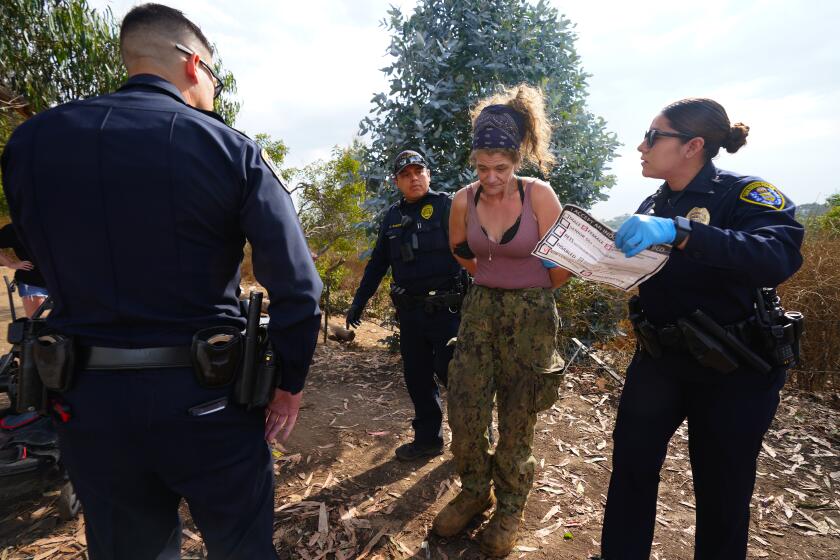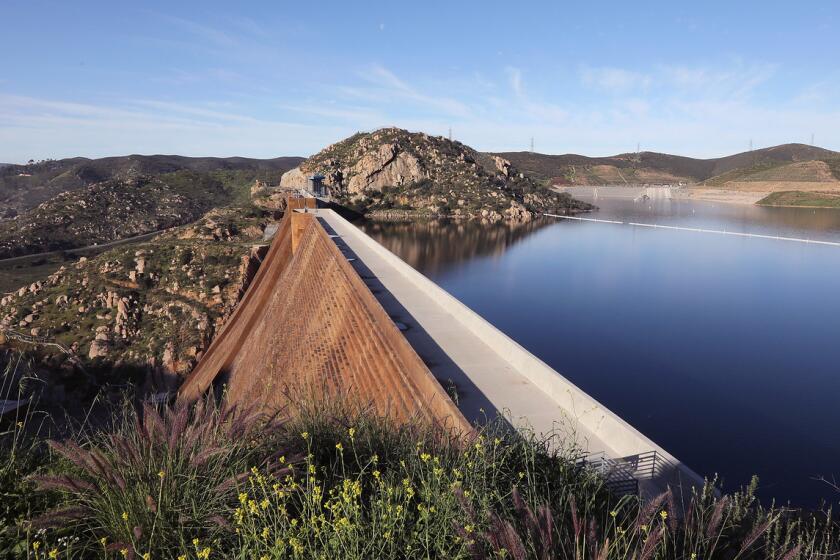Chargers eye 2016 stadium ballot measure
Stability at City Hall helped talks resume
The San Diego Chargers game plan for replacing Qualcomm Stadium increasingly points to a countywide ballot measure a little more than two years from now.
A working scenario would see a roughly $1 billion stadium proposal go before voters in the November 2016 presidential general election.
Funding would combine money from the Spanos family that owns the team, development partner Colony Capital, LLC, and some form of taxpayer contribution common in the construction costs of every new National Football League stadium in recent years.
The Spanos family and investment partners would put up roughly $400 million and seek a $200 million loan from the NFL. The rub comes in how the remaining roughly $400 million would be financed.
The proposal could include a Joint Powers Authority to oversee the stadium, which the team wants to own and have operational control over to help recoup its costs.
Early talks with Mayor Kevin Faulconer’s top aides are ongoing with no firm proposal expected for months. But a variety of factors have re-energized the more than decade-old quest for a higher revenue-generating stadium the Chargers say they need to compete with other franchises.
The key factor in the talks resuming, say parties in and around them, is a renewed sense of political stability at City Hall.
“San Diego has had seven mayors over the last decade — the kind of political instability that is more typical of a banana republic than of a major American city,” said Mark Fabiani, team special counsel and point man on the stadium issue. “We hope, for the good of the city overall and for the future of our stadium project, that we will now see a solid stretch of political stability for San Diego.”
Other major factors that bring the stadium issue back to the political forefront include the improved economy, an increase from $80 million to $200 million in loan money available NFL, and fears of a team relocating or the league granting an expansion team to Los Angeles. Orange County accounts for roughly a third of the Chargers’ ticket base.
What do you think?
Would you support such a proposal? If not, what are the alternatives? Share your thoughts in the comments below.
The Chargers say they are open to ideas and not locked into any site. That comes after the city vehemently opposed its idea of a multi-use stadium that could work in conjunction with the downtown convention center.
“Nonetheless, we are continuing to work on this project, and we hope that our ongoing meetings with the mayor’s staff will result in another proposal that can work for the city, the Chargers, and, ultimately, the voters,” Fabiani said.
Former San Diego mayor Jerry Sanders now views the stadium through the prism of his job as head of the San Diego Regional Chamber of Commerce. He said he believes it needs to be the kind of multi-use complex the Chargers still want but has no position on where it should be built.
“Downtown would compliment the energy that is already there because of Petco Park, but Qualcomm would also be a great site due to its location and development opportunities,” Sanders said. “The chamber is in support of a new stadium going to the voters, though we would want to see the specifics of a financing plan before we could say we support any given plan.”
The chamber has told Faulconer and Fabiani that it intends to be an “active participant” when the time comes. Chamber executive vice president Aimee Faucett worked for Sanders during his mayoral stint and served as his lead on the stadium issue.
Fabiani said the Chargers aren’t drawing any line and won’t issue any ultimatums as talks go on.
“We have for all of this 12-year effort been very careful not to impose any deadlines or drop-dead dates on the city and we aren’t about to do so now,” he said.
The Joint Powers Authority is an available mechanism under state law. A current example is the one overseeing the San Francisco 49ers new stadium opening in Santa Clara this year. The stadium authority there is a public agency separate from the city and set up for the development and operation of the stadium with Santa Clara in no way liable for its debts.
Fabiani said that same approach makes sense in San Diego. But he cautioned that “our discussions with the mayor’s office have not reached the state yet where anyone is committed to this idea.”
The desire for a countywide vote is based on the likelihood of regional support for a new stadium trumping opposition from within the city from those oppose to any use of city assets or revenues.
San Diego political consultant John Dadian and others see a countywide vote as a logical strategy.
“The Chargers are a regional asset and including the entire county is smart,” he said, adding the county Board of Supervisors also is likely to be friendly to a stadium proposal.
Faulconer’s people remain tight-lipped about the talk. Publicly, they say the ball remains with the Chargers and there is nothing for them to comment on until a specific proposal emerges.
The mayor’s position is that “taxpayers need to be protected.” But he has not ruled out contributing city land under a plan that would generate increased tax revenues for the city from new development.
While his agenda is focused on his first proposed budget and speeding up street, sidewalk, police and emergency service enhancements, helping bring a new stadium to the city would be a major accomplishment that has eluded his predecessors.
“The numbers have to pencil out, but you have a mayor now who is looking for a reasonable solution,” Dadian said.
T.J. Zane, the recently departed head of the Lincoln Club of San Diego County that heavily backed Faulconer’s election, said it’s time for all the parties to come to the table.
“I don’t know that he (Faulconer) necessarily wants this now, but he does have a lead role and the city has to bring along other elected officials,” said Zane, who’s now working as a political consultant.
While the team had once abandoned the Mission Valley Qualcomm property as a redevelopment site, it now says it is willing to consider that location. Qualcomm first opened 48 years ago, was refurbished in 1984 and 1997, and costs the city treasury about $15 million to year maintain.
The convention center location remains in the cards if a challenge to its expansion approved last year by the California Coastal Commission prevails.
A downtown site within eyeshot of Petco Park remains high on their list but requires the city agree to give up property it owns.
Besides San Francisco, new NFL stadiums are set to open in Minnesota in 2016 and Atlanta in 2017. Should a 2016 ballot measure here come to fruition and win approval, a new stadium could be ready by 2018 or 2019, shortly after the 20-year Qualcomm naming rights that cost the tech giant paid $18 million for in 1997 expire.
Get Essential San Diego, weekday mornings
Get top headlines from the Union-Tribune in your inbox weekday mornings, including top news, local, sports, business, entertainment and opinion.
You may occasionally receive promotional content from the San Diego Union-Tribune.







